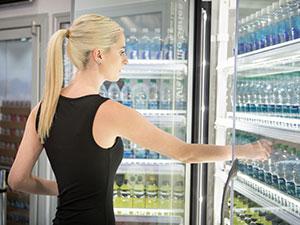A Profitable Approach to C-Store Energy Savings
Published in CSP Daily News
Improvements boost the bottom line and satisfy customer demands
June 14, 2017
 Today’s discerning shoppers not only possess more information relating to the products they buy (or choose not to buy), but they also have strong opinions on the companies they choose to patronize, especially when it comes to the effect the company’s operations will have on the environment and generations of future shoppers. This attitude is known as seeking “corporate social responsibility,” or CSR, from their providers of goods and services.
Today’s discerning shoppers not only possess more information relating to the products they buy (or choose not to buy), but they also have strong opinions on the companies they choose to patronize, especially when it comes to the effect the company’s operations will have on the environment and generations of future shoppers. This attitude is known as seeking “corporate social responsibility,” or CSR, from their providers of goods and services.
British economist Lord Holme defined CSR as “the continuing commitment by business to behave ethically and contribute to economic development while improving the quality of life of the workforce and their families, as well as of the local community and society at large.”
Despite this evolution in shopper mindset, it can be hard for convenience- store operators to fully commit to making their stores “greener.” After all, job No. 1 for the retailer is to ensure that the business is profitable. If not, then the doors will have to close.
So, it’s truly understandable why some may acknowledge the importance of “going green,” but in reality, are much more concerned with profits outnumbering losses on the spreadsheet. The obvious implication of ignoring shoppers’ demands for CSR, however, is the risk of a political or social backlash that could harm the c-store’s reputation and lead to a loss of business that can put its survival at stake.
The truth, though, is that good, targeted CSR-related operational improvements can have a positive effect on the c-store’s bottom line while simultaneously satisfying customer demands. One area where this is possible is the lowering of those expenses that have traditionally been seen simply as the “cost of doing business,” namely utility and energy costs. In fact, studies have shown that the second-highest expenditure for c-store operators is energy costs, especially for the electricity that is consumed by the cooling and freezing equipment in cold-vault aisles. A recent Energy Star report indicated that reducing energy costs by 10% could lead to a 16% increase in net profit for the store.
One of the ways that c-store operators can improve their energy consumption in the cold-vault section is to invest in all-glass cooler doors that feature Vacuum Insulated Glass (VIG) technology. These “zero energy” doors require no heat to remain condensation-free, which can result in up to 70% in operational energy savings when compared to traditional door products.
In this realm, Anthony®, a merchandising solutions provider of cooler and freezer doors, and related equipment, offers its innovative Vista Elite® VIG Door model. The Vista Elite is the c-store industry’s only all-glass, energy-free cold-vault cooler door that does not require door or glass heat. Retailers who choose Vista Elite doors will realize a two-year return on investment (ROI) thanks to the energy-cost savings that are created. The operation of Vista Elite doors also satisfies the U.S. Department of Energy’s new commercial-refrigeration energy-efficiency standards that took effect on June 5, 2017.
Additionally, the unique design of the Vista Elite door removes the center mullions and thick borders that can hinder the shopper’s line of sight into the cold vault. This panoramic merchandising capability gives the shopper an unhindered view into the cooler or freezer. The ability to identify and retrieve products more readily will decrease the amount of open-door “dwell” time the shopper will need to find the desired item, which means less cold air that will escape into the aisle, resulting in a more pleasant shopping experience and less energy loss.
For more information on Anthony’s complete lines of cold-vault doors, please visit www.anthonyintl.com.